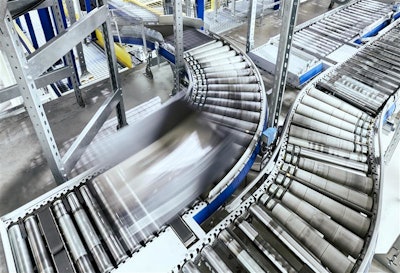
Cash is king for manufacturers – from the owner down to the machine operators. Manufacturers must have a keen eye on how everything is being used. Machines are generally only running if they are making parts; employees are typically only working if orders are coming in; and scrap is examined carefully to determine “How did this happen? How can we prevent it from happening again? What else can we do with this?”
Even the best manufacturing owners make mistakes. But rarely, do they make the same mistake twice. If you ask them what some of their biggest mistakes have been, they are often tied to how their inventory was managed. Meaning, that was in the past, and today they are doing something different. What is different? Here are 10 inventory must do’s manufacturers must follow in order to keep the line moving.
1. Clear out the inventory garbage. This means, process your inventory correctly and consistently with no exceptions. Your inventory processes should be documented and employees trained, re-trained and trained some more; and you should have absolute consistency in your product lines, units of measure, etc. Documenting processes also means knowing explicitly who owns what, including inventory master, inventory costing and inventory quantity. Everyone should know what they are doing, when, why and the consequences of it being done incorrectly. And, don’t let the fox guard the henhouse. The employee responsible for transaction processing cannot have access to inventory adjustments. A few hours spent training employees will save you money and heartache (and maybe even a lost customer) when you try to make a part with inventory you don’t have. Clear the garbage out of the inventory process, and you will be left with a much better result.
2. Regulate inventory counts. Physical inventory or cycle counts should always be performed on a regular basis and produce accurate numbers. By implementing regular inventory counts, this allows you to consistently ensure inventory accuracy throughout the year. Customers complete this in one of two ways. The first being they cycle count daily or weekly, which means they count parts based on usage or dollar amount to verify their inventory is correct. If their numbers are getting adjusted, that means their inventory is off and they must figure out what inventory transactions are causing the issue. The second way to regulate inventory is by doing physical inventory, which calls for shutting down the shop floor and counting the inventory one weekend a year, sometimes two.
3. Evaluate unused inventory. Just like clutter in your home, obsolete inventory or low turn inventory should be evaluated on a regular basis, not just once a year. Inventory takes up space, and space is money. If something is taking up space and not moving, that is taking away an opportunity for something that you could be selling and bringing in more revenue for the company.
4. Know your business’ trends. Keeping your inventory labeled is an important step in controlling your inventory between physical inventories. Be “hip” with your business. Re-order, lead time and order quantity should be reasonably accurate and evaluated on a regular basis (and again, this doesn’t mean once a year). You know your business better than anyone and knowing when spikes occur throughout the year allows you to better plan on seasonal changes in your inventory. If your business is seasonal, you may need to adjust your min/max quantities throughout the year as well. A great way to evaluate this data is to be using key performance indicators (KPIs).
5. Research your vendors’ competition. Your vendors win when you get lazy. So, it’s okay to pick up those pesky sales calls every once in a while. Listen to the vendor’s sales pitch and what they have to offer as far as pricing and quality rating. You may be surprised by what they have to offer. If you stick with the same vendor year after year, you may not receive the best bang for your buck. Prices slowly and steadily creep up, and discounts suddenly vanish. Evaluate cost regularly and do not ignore savings on buying items in bulk when appropriate. This can be an opportunity for blanket orders to come into play with vendors, and you will receive a discount by planning ahead. But, this requires you to know your business trends and when those seasonal spikes occur.
6. Automate as much as possible. If job costing is a full-time job, then you probably have inventory issues. By automating with a job costing accounting application, you can spend less time worrying about what your finished goods cost and more time on creating a quality product. Good job costing leads to accurate inventory cost and quantity, providing an opportunity to automate part or all of the processes.
7. Record inventory flow. You are what you eat. As inventory is consumed or shipped, it needs to be recorded. Some customers manage this process with one person, a team of people or they let their machinist move the parts. For example, map the inventory flow process: A. Issue material to work order B. Bin-to-bin transfer C. Purchase order receipts D. Work in progress (WIP) to finished goods E. Location transfers. You also have the option of backflushing and auto WIP should you choose. If you make it to the last step and you have 10 good parts, then 10 parts are WIPed into inventory (finished goods). Spend a few minutes every time and record inventory flow to save hours in the long run.
8. Listen to your business with ERP. Hearing is the act of perceiving sound, but listening is something you choose to do. Move beyond “hearing” with your fully integrated enterprise resource planning (ERP) system with manufacturing resource planning (MRP) functionality and “listen.” Manufacturers using an ERP system correctly are faster, smarter and more profitable than those who don’t. Listen to your business by viewing and analyzing the data your ERP system provides to see trends, view roadblocks and make better business decisions. Utilizing a business intelligence application, KPI application and dashboards, you can see inventory detail in real-time and really listen to your inventory.
9. Correct employee mistakes immediately. In manufacturing, loose lips don’t sink ships. They save them. Employee attitude and participation is the icing on the cake, and if an employee or machine isn’t doing something correctly, don’t let the ship sink. For example, if you see Jane Doe routinely recording inventory, but she always misses a few parts, your inventory counts will continuously be off and you will be spending more money purchasing inventory you don’t need. Speak to a manager or superior and make them aware of these concerns. Speak up and refer to No. 1. Honesty is the best policy when it comes to business, especially when money is involved. By addressing inventory mistakes early on, you reduce the risk of losing money, inventory and production time.
10. Always ask questions. Don’t guess how to do it – ask someone. Don’t let the fear of asking a “dumb” question keep you from managing your inventory the correct way and making money for your business.








